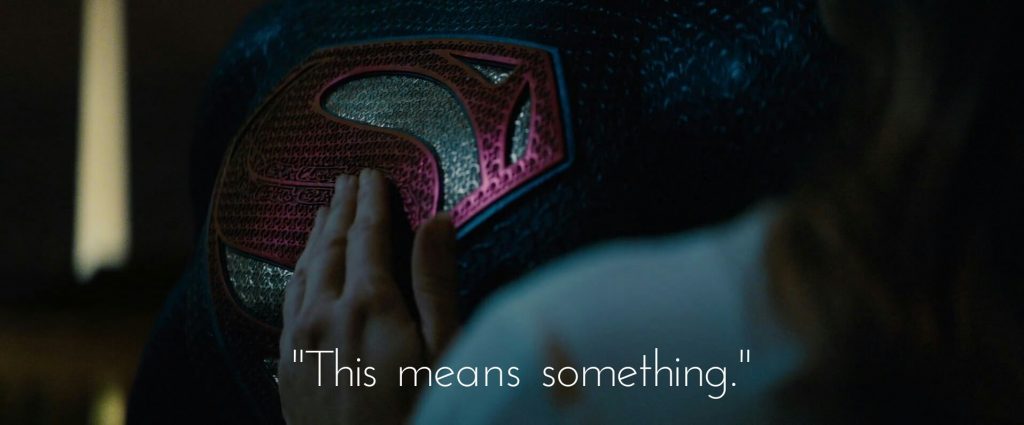
Zack Snyder’s Man of Steel: The Hero I Needed by Manu
Zack Snyder’s Man of Steel:
The Hero I Needed
_____________________
How The Director’s Faithfulness To Siegel & Shuster’s Original
Intent Reclaimed Superman For Many Of Society’s Outsiders Today.
by: Manu
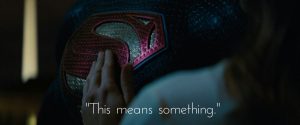
Like many superhero stories, this one begins with a tragedy. On the night of June 2nd in 1932, an attempted robbery of a second-hand clothing store in Cleveland, Ohio resulted in the shop owner’s death. Gunshots were heard, but it was the ensuing heart attack that eventually took his life. His son could not help but wonder, “What if my father had been bulletproof?” His name was Jerry Siegel. (USA Today)
Jerry was part of a Jewish family that immigrated to the United States in the hopes of a better life. Growing up, he was fascinated with the pulp heroes of comic strips and science fiction stories. It wasn’t until his first few days of high school, where he would meet Joe Shuster, someone whose passion for stories rivaled his own. Joe, like Jerry, was from a Jewish family in search of opportunity. (The Smithsonian)
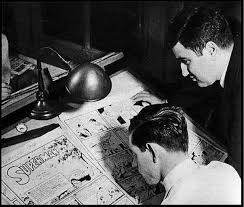
Figure.1 Siegel & Shuester
The pair quickly bonded over their similar backgrounds and passion for the fantastical, they became inseparable. They both shared a dream to create stories of their own, that they could share with the world. They worked tirelessly on a hero of their own making. One that had been sent here from far away. One that was similar to everyone else, yet still incredibly different. One who could deflect bullets off of his chest. From their minds, their heart and their experiences; The first ”superhero” was born; The Superman.
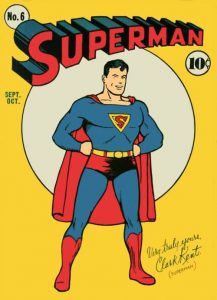
Figure 2. “Early Superman Comic Book Cover.”, Courtesy of DC Comics.
According to legendary comic book writer Stan Lee, “A superhero is a person who does heroic deeds and has the ability to do them in a way that a normal person could not. So in order to be a superhero, you need a power that is more exceptional than any power a normal human being could possess, and you need to use that power to accomplish good deeds.” (Rosenberg)
It cannot be understated that the first superhero was created during the heights of The Great Depression. What began with the stock market crash of 1929, led to one of the worst economic downturns in the history of the industrialized world. (History.com) Nearly 15 million people were out of work. Half of the country’s banks had failed. Both consumer spending and investment were down.
Many people felt lost and downtrodden, and in an ironic twist of fate, the struggles associated with immigrants became a national plight. Nevertheless, an immigrant family must have felt it even more; the trauma of The Great Depression exacerbated by cultural and ethnic exclusion from the center.
So while Siegel and Shuster created Superman for themselves, a hero who was on the outer fringes of society and fought for their causes, he organically became universally accepted. A nation struggling with economic hardship, the threat of big business, fast-moving industrialization restructuring the economic landscape, terrifying new technologies, and the threat of world wars clung to this idyllic superhero from rural America that fought against these new threatening forces out in the world. His legacy has only grown in the decades since.
Our story continues decades later. It is the ‘90’s and I, like everyone else, knew who Superman was. I grew up watching Christopher Reeves on the big screen, as well as Lois & Clark and the Animated Series on the small screen. I knew Superman, but I never loved him. In mass media, Superman had been depicted as an invulnerable figure. Physically, he was perfect. Emotionally, he was flawless. He had impenetrable skin. He could travel the world in less than a minute. He could fly. He was loved and accepted by all. He was so perfect, that the scarce weaknesses he had; Clark Kent being a mild-mannered klutz, his naiveté, the desire to be accepted by humanity, were endearing to the audience. He seemed above things mere mortals have to wrestle with; doubt, weakness but most importantly, fear.
Enter: The Batman.
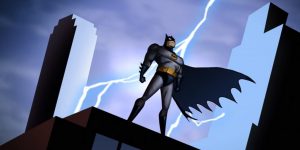 Figure.3 The Animated Series by Paul Dini and Bruce Timm”, courtesy of Warner Bros. Animation
Figure.3 The Animated Series by Paul Dini and Bruce Timm”, courtesy of Warner Bros. Animation
Batman was a whole different superhero offering. He was a mere mortal who turned his greatest weakness – something Superman seemed to lack – into his greatest weapon. He felt fear, conquered it then mastered it. He was who I hoped to become. Because unfortunately, I could relate to Bruce Wayne. Growing up, we both felt much fear. And so I was a Batman fan through and through. In the fanboy debate: Batman versus Superman, it was Batman every time … until Zack Snyder came along.
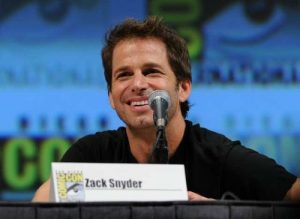
Figure 4. Zack Snyder. San Diego Comic Con 2012.
When it was announced Zack Snyder, who had successfully directed several comic book adaptations, had been handpicked by Christopher Nolan to direct the revival of Superman, my interest was piqued. I wasn’t a fan of Superman, the recent underwhelming Superman Returns (2006) reinforced that, but I was willing to give the film a chance due to the team that had been put together. When Man Of Steel was released it subverted every one of my expectations.
After my first viewing, I ran and found as many Superman comics as I could and devoured them. Where had this character been all of my life? Did he not know that I had needed him? The Superman that Zack Snyder had put to screen encapsulated my life experiences more than any other hero. Do you like stories? Let me tell you how:
I was only three years old when my family and I left Senegal. Like most people, I don’t remember much from that time. My earliest memories were of Ottawa, Canada. The wondrous place where my father’s promotion had taken us to.
I enjoyed a safe and happy childhood, while my older brothers had already started school. I remember them coming home on many occasions a little bloody and with their clothes a little worse for wear. I listened to the arguments they had with my parents. Words like “Black”, “White”, “racist” and “bully” were heard coming from the kitchen. I did not understand exactly what was happening, but I knew that school was the last place I wanted to be. If my brothers were having so much trouble, what chance did I have?
When I started school, I remember being afraid of receiving the same treatment. I kept to myself, did not talk much and waited for the inevitable to happen. After the first week went by without any trouble, I began to approach my classmates. I soon realized that they treated me differently than they treated each other. They kept me at a distance. They looked at me with odd fascination, almost as though they were studying me.
I never understood what they found so fascinating about me. Until we began to study measurements. We were asked to measure each other’s arms and biceps, and no one wanted to do mine. I walked around the classroom asking everyone, only to be turned down time and time again. Finally, I came across two boys that I had considered friends, hoping they would pull me out of my misery. Instead, they looked at each other, before beginning to argue.
“You touch him. I don’t want to touch him.” One of them said to the other.
“How about I do the arm and you do the bicep?” He replied.
“Why do I have to do the most disgusting one? I don’t want to touch his skin.”
That was the first time it dawned on me. My skin was different from theirs. To make matters worse, it wasn’t only in my class. My brothers and I were the only Black kids in the entire school. Everything began to make more sense. The looks, the whispers, the constant distance between my classmates and myself. After noticing it, I could not notice anything else.
The following years would not be any easier. I developed a stutter. Whenever I tried to speak, I would fight through almost every word. My teachers noticed; eventually doing their best not to call on me. I saw it as a small kindness
One day in class there was no hiding. I was put on the spot and had to answer like everyone else. I don’t remember the question, but I knew the answer. I tried. I did all I could to answer but to no avail. My tongue continued to slip on every word. While I juggled incessantly, I could hear the kids around me. Laughing.
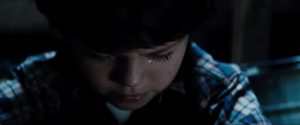
Figure 5. Man Of Steel. Young Clark in Broom Closet. Courtesy of Warner Brothers.
“Guess they don’t speak in Africa.” I heard some of them say. Another began to click his tongue, sending the entire classroom in a fit of laughter. I began to cry in the middle of class. It took some time but eventually, they stopped. The ripping only continued during recess and in the halls.
After what seemed like an eternity – it was a few weeks – of unbearable embarrassment, harassment, and bullying, there was some light at the end of the tunnel. My father announced that we would be moving to New York City. Another promotion had come his way, and we were finally leaving Canada. I was excited. The knowledge that I would be leaving that school gave me the strength to finish off the year. A few weeks after the school term had ended, we were packed and headed for a new start.
That fall I was to begin attending a small international school in the heart of Manhattan. Many of the other students would be the children of diplomats, primarily from Africa. On the first day, I was stunned to see myself surrounded by people who looked like me. I went from being an outsider to being part of the majority. Or so I thought.
The kids that I was with were all mostly traveling for the first time. They had spent their childhood in their home countries before coming Stateside. The fact that I knew almost nothing of my home, that I could not speak my native tongue, was cause for derision. Once more I was on the receiving end of jokes. Only this time I was considered to be too “White.”
I did not sound like them. Growing up in Canada, English and French came naturally and easy for me, while they had trouble acclimating to the new language. I did not dress like them. They turned towards the baggy jeans and style most commonly found in rap videos. Our tastes in music differed. I listened to different genres and artists and was mocked constantly for not always listening to hip-hop.
I was still an outcast. I was too young to appreciate the irony of it all. Instead, I found solace in books. I read whatever I could find. I loved stories of distant worlds and heroes who fought overwhelming odds. This was when I fell in love with Batman. A strong, moral, vulnerable and fearless hero who always found a way to win, even when he was outmatched.
Over time jokes became insults and words turned into fists. There was no escaping the beatings. Strategy was key. My schedule was timed down to the nanosecond to avoid them. Teachers knew what was happening and only advised me to continue avoiding them as much as I could. It was a small school and there was only so much I could do.
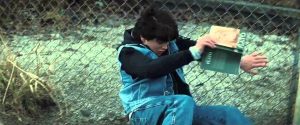
Figure 6. Man Of Steel, Teenage Clark faces bullies. Man Of Steel, 2013. Courtesy of Warner Brothers.
During the summer of my fourteenth birthday, my parents set up a trip so that we could go to Senegal. It was the first time I was going to go home since I had left as a child. I remember the plane ride, imagining what it would finally be like to be somewhere I had always referred to as home. I will never forget stepping off the plane and being hit by the hot sun. It was an entirely different world to the concrete jungle that was New York City.
My mother had rented us a small house where we would be living during our month long stay. I met aunts, uncles, and cousins that I had only heard of and seen in pictures. They were filled to the brim with questions about America and was told repeatedly how lucky I was to be there. I could not help but feel that they were the lucky ones.
My stay eventually took a turn when I began to pick up on certain behaviors. I understood the language better than I let on and would oftentimes, sit and let them talk around me. I realized that my family had harsh words and thoughts for me.
They called me “Toubab”, which means White person. When I made mistakes or did not understand something, they would burst out in fits of laughter. No one ever took the time to explain anything to me. I was a source of constant entertainment. They would pull pranks on me, leaving me alone in the markets knowing full well I did not know my way around.
I left Senegal feeling incredibly saddened. I had hoped to find a place of peace. Somewhere to call “home.” Instead, all I found were the same disheartening things I had run away from. It was the first time I felt I may never find belonging and acceptance.
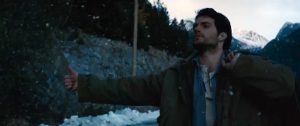
Figure 7. Man Of Steel. Clark hitchhiking towards scout ship. Courtesy of Warner Brothers. 2013.
A few weeks after returning “home” from the trip, my dad was given another promotion. We were to move to Lagos, Nigeria. There was no excitement for me. I would move to this new place where the same horrors would follow me.
My first day of school in Lagos was not what I had expected. There were kids from everywhere- Belgium, India and various countries in Africa. I was the new kid from New York and everyone was kind to me. I was bombarded with questions about New York and America and my accent was a treat for everyone.
I made real friends for the first time. I was accepted and had a small group of friends I still am close to, to this day. Those years were easily the best of my life. I look back on them with fond memories. It is here that I found my confidence. I had found my Justice League … I had found my world.
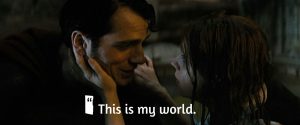
Figure 8. Batman V Superman: Dawn Of Justice. Clark finds his place in the world. Courtesy of Warner Brothers. 2016
My father retired and we were sent home to Dakar. I had graduated and would be continuing school in the U.S. But not before returning to Senegal.
It took a year before I was able to return to America. I wasn’t in school and I wasn’t working. I did not have any friends and my cousins and most family members still saw me as a “Toubab”. Worse, a spoiled brat that had no idea about how difficult their lives had been compared to mine. No matter how hard I tried, they would never accept me.
I spent that year with my dad. I had always loved and respected him. Idolized him even. He was the total opposite of me. While I was shy, quiet and introverted, he was funny, smart, witty and everyone loved him. He had this amazing ability to make any and everyone feel at ease.
We drove to his old village together and I saw where he grew up. I met his childhood friends, I saw the small school he went to that was barely still standing. My father could trace the entirety of his childhood here, something I could never do.
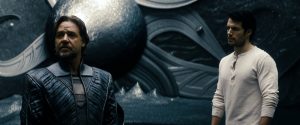
Figure 9. Man Of Steel Jor-El teaching Kal about his heritage. Courtesy of Warner Brothers 2013.
I haven’t been back to Senegal since nor do I have a strong desire to do so. It isn’t home to me, it never was. I wasn’t naive enough to believe that America was home either. I am an African American that is neither African nor American. I am of two worlds but don’t feel I belong to either. Resolving my sense of identity and belonging is an ongoing challenge, but I am optimistic. Art like Zack Snyder’s Superman specifically generates an internal dialogue and inspirational hope that helps me deal with those feelings.
Watching Man Of Steel, I see myself in Clark. In Canada, I was the kid who hid in the broom closet, knowing I was different but never really understanding how or why. I was that boy on the bus, wanting to be left alone and yet still sought out and insulted for no reason.
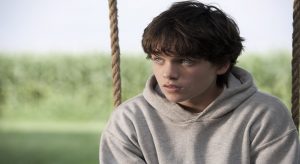
Figure 10. Man Of Steel young Clark at the farm. Courtesy of Warner Brothers. 2013
In New York, I was a lost and angry teen; wanting to fight back against my aggressors and not being able to. Taking the punishment and making myself as small as I could, so that the world would forget about me. In Senegal, I was the man who had found where he had come from and could never go back.
I felt what he felt. The loneliness, the anger, the fear and the confusion. I was Clark Kent and he was me. Never until that film had I ever felt that a character so thoroughly represented me at my emotional core.
Man Of Steel is a journey within Clark. A journey to discover, not only where he comes from, but where he belongs. At the end of the film, he chooses the people of Earth and the potential of Mankind; even if it meant, losing the last connections to his home planet.

Figure 11. Man Of Steel. The Superman. Courtesy of Warner Brothers. 2013.
Those themes of belonging continued in Batman V Superman: Dawn of Justice. Although Clark had chosen Earth, Mankind had yet to choose him. Witnessing this heroic figure brought down by the people he sacrificed so much for, formed almost a kinship between he and I. He was debated, mocked, protested against. He was rejected. The same rejection that I have feared all of my life.
Though it was difficult for him to do so, he carried on. He hoped that his actions would guide the perception of him that existed. The harder he tried, the harder the world fought against him. He, like many of us would have, lost faith. He felt once again out of step with his adopted home.
Not until his confrontation with Batman, could Clark regain hope. Superman was only able to stop his own murder by mentioning his mother’s name. Showing Bruce, they had more in common than he could have ever known. The Kryptonian had a human mother, and she was in danger.
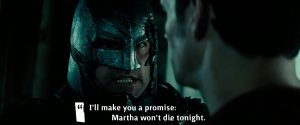
Figure 12. Batman V Superman: Dawn Of Justice. Batman no longer sees an enemy. Courtesy of Warner Brothers. 2016.
The pair bonded over a connection they had no idea existed. Seeing this new found understanding in Bruce, and his willingness to help him save his mother, Superman’s faith in the good of mankind was restored. It reflected something I had felt for some time. People should not simply relate to each other in the ways they are obviously similar but realize that even though they are different, they can still have very much in common.
The friends I had made in Lagos were different from me in so many ways, yet we were able to connect in the commonalities that we had within ourselves.
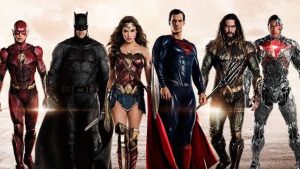
Figure 13. Justice League Promotional Still. Courtesy of Warner Brothers
In Canada, if they had not cared so much about my skin color, maybe they would have seen that I loved Power Rangers just as much as them. In New York had they not been so preoccupied with my life in Canada, maybe we could have shared our interests in sports. If my family back in Senegal had not focused so much on the better hand that I had been dealt, maybe we would have found common ground in more emotional hardships.
That is why Superman means so much to me. It is why I will always be grateful to Zack Snyder for giving me a character that went through similar adversities I had been through. It is no small feat to use our most iconic pop culture figure to speak for outsider groups with stories that are hardly, if ever, told on such a grand scale. I find this to be a brave and noble act. The critical reception to these films is proof of that. But was Snyder “wrong”? Was his portrayal of the Superman as brazen and radical as it felt to me?
After seeing Man Of Steel, I threw myself into Superman comics. It was all there. Zack Snyder hadn’t made anything up or given him a backstory that did not exist. He was an immigrant who faced doubts, loneliness and wasn’t sure where he belonged. It is important to remember his creators were immigrants. They must have felt these similar emotions and created a hero in their image. A hero that represented them and their struggles. Superman’s strength as a character is not due to his unbelievable powers, but that 80 years after his creation, a child from Senegal could still relate to him.
We lost this essence of the character due to many different circumstances. During the Golden Age (1938-1950), The Superman in the comics was a serious, no-nonsense hero. He stood up for the everyman and against the establishment. (Washington Post) At this time, comics were mainly written by Jews, African Americans, immigrants and other minorities. Many of them felt rejected from other forms of “serious” publishing and turned towards the comic industry. This allowed for a diverse set of interesting stories told by a wide range of people from different background and experiences. (VOX)
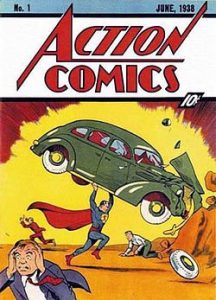
Figure 14. “Early Superman Comic Cover.” Courtesy of DC Comics
At the end of World War II, there was a shift in the American consciousness. There was a much deeper emphasis on what type of media children were consuming and how it could affect them negatively. (Undergraduate Review) Comics were under fire, led by a German-American therapist called Fredric Wertham. Noticing that many of the delinquents he worked with read comic books, he jumped to the conclusion that these books were to blame for their actions. (VOX)
In 1954, Wertham published a book called The Seduction Of The Innocent. In the pages he took the comic industry to task, claiming Wonder Woman was a lesbian, Batman and Robin were homosexuals and the violence and brutality of these books led children towards similar paths. This caught on quickly in the U.S House of Representatives, allowing Wertham a Senate hearing. During which Wertham claimed comic books were a greater fear to him than Adolf Hitler. (VOX)
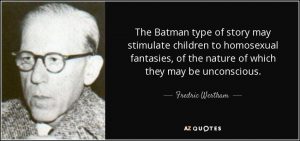
Figure 15. Fredric Wertham, courtesy of AZ Quotes
Making matters worse for the comic industry, Wertham’s crusade was taking place during the heights of McCarthyism. Due to growing concern over the rise of Communism in Eastern Europe and China, a young senator named Joseph Mccarthy made a bold claim that over 200 card-carrying communist had infiltrated the U.S Government. (PBS) These accusations quickly turned into a witch hunt that focused greatly on writers and entertainers. Many of them were named communist sympathizers and had hearings held against them. (PBS)
The combination of Wertham’s accusations and Mccarthy’s offensive against creatives, left the industry with no other choice but to respond out of fear of losing its readership. Many publications that were deemed to be too controversial were eliminated. For those that remained, a new organization called the Comics Code Authority was created to keep comics from straying too far outside of the lines of censorship. (Undergraduate Review)
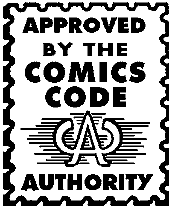
Figure 16. Comics Code Authority Stamp.
With all of these changes, every hero was altered to fit the new parameters. Batman went from being a dark, brooding and gun-wielding force to a lighter hero. His love interest Vicki Vale was introduced to reject the claims of his homosexuality. (VOX) Superman, who once represented the everyman, was turned into a defender of the established order. He fought Nazis, the Japanese and other U.S political enemies. His edges had been taken away and replaced with a fight for “Truth, Justice and The American way.” (Undergraduate Review, Washington Post) He was given a more domestic lifestyle and his adventures became increasingly zany and whimsical.
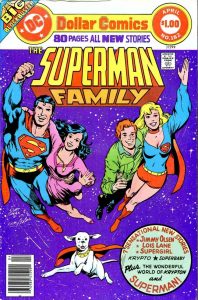
Figure 17. “Early Superman Comics Cover.” Courtesy of DC Comics.
This image coupled with the campiness of the ’70s became the template for Richard Donner’s blockbuster smash hit – Superman: The Movie (1978). The popularity of which fossilized the CCA approved image of the Man of Steel in the public consciousness. He was no longer analogous to the immigrant experience; of being the “other”. He had become the All-American poster boy for the mainstream. He was the perfect super powered being with agreeable weaknesses, above the struggles of mere mortals. He was the ultimate insider that an outsider such as myself could never relate to.
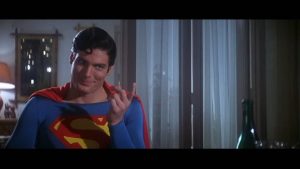
Figure 18. Superman: The Movie. The Interview With Lois. Courtesy of Warner Brothers. 1978.
This skew in the image of the first superhero did not go unnoticed. Frank Miller, in his seminal graphic novel Dark Knight Returns (1986), held a critical spotlight on Superman. Our hero had become nothing more than a government tool, taking direct orders from the president and helping to uphold the establishment. He was drawn with exaggerated colors, lines and poses to portray how detached from the least of us he had become.
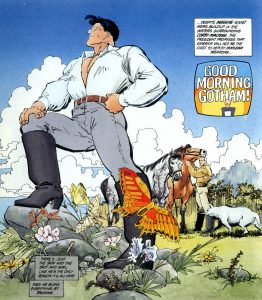
Figure 19. “The Dark Knight Returns,” Frank Miller, 1986. Courtesy of DC Comics
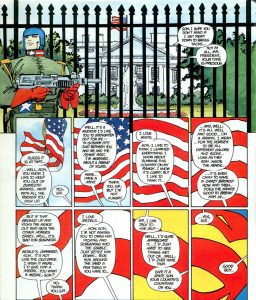
Figure 20. “The Dark Knight Returns,” Frank Miller, 1986. Courtesy of DC Comics.
Miller was not the only artist to voice these sentiments. In an interview given at The Comikaze Expo in 2015, Grant Morrison (All-Star Superman, JLA, Action Comics) stated:
“ (…) I guess It is something else that makes him boring. It is the attachment of Superman to Republican ideas. This patriarchal…this dad kind of version of Superman that existed for 20 or 30 years.” (The Confluence)
He also identified how Zack Snyder was pulling him back to his original purpose.
“ (…) I’m kinda interested in what they’re doing in the movie (BVS). The movie is kind of like The Dark Knight, but It is an inversion of (it). In Frank Miller’s Dark Knight, Superman is obviously working with the government, he’s a Republican, he hangs out with Ronald Reagan. He’s up against a very libertarian, outlaw Batman. In the new movie, It is actually changed around. Batman is working on the side of basically normality, trying to bring this man down. It is a very interesting change in a generation. In the new movie, Superman doesn’t represent the government. He’s in chains, representing the outlaw immigrant, who’s a threat to the planet. I think that’s a massive change in Superman that will change the way people look at the character. And maybe stop people from seeing him as boring or as right-wing or as Republican as he has been.” (The Confluence)
Zack Snyder made his intentions clear in an interview with the Japan Times in August of 2013
“One of the original authors of the Superman comics, Joe Shuster, was an immigrant. I thought it was fascinating how Superman — an infant from a distant planet — was placed in Kansas, which is the most iconographically central location in the U.S. Clark Kent represents a dichotomy: He’s a complete foreigner, literally an alien, but trying to come into his own in Kansas. And he holds a mirror up for ourselves. In many ways, Clark Kent’s dilemma is the American dilemma. Wherever we’re from, we all have this very strong desire for acceptance. When he’s young, most of Clark Kent’s efforts are directed toward being like everyone else. So the fact that he’s not like everyone and never will be is very difficult for him to accept.” (Japan Times)
Over time, fictional characters are bound to change and evolve. Superman, created over 80 years ago, is no exception. However, it is important that as they evolve, they continue to honor the spirit in which they were created. Especially when it is one as noble as that which Siegel and Schuster purposed Superman for.
Superman, the literal illegal alien, immigrant to Earth, gained mainstream popularity but was never intended to be the avatar of the populist mainstream. Zack Snyder’s understanding of this and how important the original intent for Superman would be to millions around the world today made him the perfect conduit to reintroduce The Man Of Steel. One only needs to take a look at our current global socio-political and ecological concerns to recognize the necessity for this type of superhero icon. One who shows us that despite the emergence of forces that seek to exclude immigrants, others, and outsiders from the dignity of inclusion, they are good, they are special, they have much to offer society and to offer hope that they too can overcome their struggles.
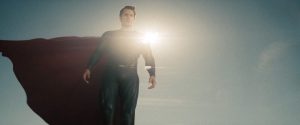
Figure 21. Man Of Steel. “Help them accomplish wonders.” Courtesy of Warner Brothers. 2013
Works Cited:
[1]. Wehrly, Elayne. “Digital Commons @ IWU.” “The Role of Superman in American Post-War Culture” by Elayne Wehrly ’95, 1995, digitalcommons.iwu.edu/rev/vol8/iss1/5/.
[2]. Abad-Santos, Alex. “The insane history of how American paranoia ruined and censored comic books.” Vox, Vox, 15 Dec. 2014, www.vox.com/2014/12/15/7326605/comic-book-censorship.
[3]. Colton, David. (2018). Superman’s story: Did a fatal robbery forge the Man of Steel? – USATODAY.com. [online] Usatoday30.usatoday.com. Available at: https://usatoday30.usatoday.com/life/books/news/2008-08-25-superman-creators_N.htm
[4]. “Arthur Miller.” PBS, Public Broadcasting Service, 10 Mar. 2017, www.pbs.org/wnet/americanmasters/arthur-miller-mccarthyism/484/.
[5]. Trubek, Anne. (2018). Cleveland, the True Birthplace of Superman. [online] Smithsonian. https://www.smithsonianmag.com/arts-culture/cleveland-the-true-birthplace-of-superman-56671378/ [Accessed 2 Mar. 2018].
[6]. Shoji, Kaori. “Snyder ponders Superman’s ultimate dilemma.” The Japan Times, 29 Aug. 2013, www.japantimes.co.jp/culture/2013/08/29/films/snyder-ponders-supermans-ultimate-dilemma/#.WmoYZqhKvIU.
[7]. Rosenberg, R. (2013). What is a superhero?. Oxford: Oxford Univ. Press.
[8]. Weldon, Glen. “Superman’s real kryptonite: American politics.” The Washington Post, WP Company, 5 Apr. 2013, www.washingtonpost.com/opinions/supermans-real-kryptonite-american-politics/2013/04/05/208706d4-9c7f-11e2-9bda-edd1a7fb557d_story.html?utm_term=.efd9891578a3.
[9]. The ConFluence1. “Grant Morrison Talks Batman v. Superman Comikaze Expo Stan Lee 2015 Hot Topic Main Stage.” YouTube, YouTube, 31 Oct. 2015, www.youtube.com/watch?time_continue=2&v=f5iL6Zurfxg
[10]. Fig 5. Cooper Timberline, scene still. Dir. Zack Snyder. Courtesy of Warner Brothers, 2013
[11]. Fig 6. Dylan Sprayberry, scene still. Dir. Zack Snyder. Courtesy of Warner Brothers, 2013.
[12]. Fig 7. Henry Cavill, scene still. Dir. Zack Snyder. Courtesy of Warner Brothers. 2013.
[13]. Fig 8. Henry Cavill, Amy Adams, Scene Still. Dir. Zack Snyder. Courtesy of Warner Brother. 2016.
[14]. Fig 9. Russell Crowe, Henry Cavill, Scene Still. Dir Zack Snyder. Courtesy of Warner Brothers. 2016.
[15]. Fig 10. Dylan Sprayberry, scene still. Dir. Zack Snyder. Courtesy of Warner Brothers. 2013.
[16]. Fig 11. Henry Cavill, scene still. Dir. Zack Snyder. Courtesy of Warner Brothers. 2013.
[17]. Fig 12. Ben Affleck, Henry Cavill, scene still. Dir. Zack Snyder. Courtesy of Warner Brothers 2016
[18]. Fig 18. Christopher Reeves, scene still. Dir. Richard Donner. Courtesy of Warner Brothers. 1978
[19]. Fig 21. Henry Cavill, scene still. Dir. Zack Snyder. Courtesy of Warner Brothers. 2013.
[20]. Fig 1. [Digital image]. (n.d.). Retrieved from https://www.flickr.com/photos/deconstructing-roy-lichtenstein/6487184139
